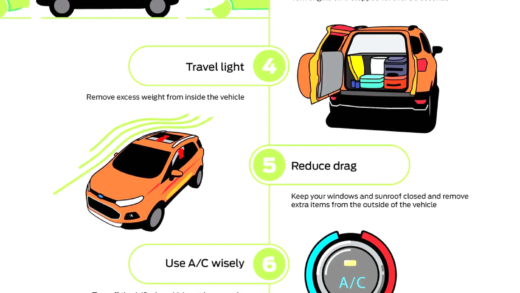NASCAR drafting is crucial for enhancing speed and fuel efficiency while posing risks like visibility issues and collision chances. The technique has evolved with technology and data analysis, making it more strategic. Effective tracks for drafting include Daytona and Talladega, which maximize the benefits of this technique.
Understanding NASCAR Drafting: Basics
NASCAR drafting is a critical technique used by drivers to gain speed and improve their chances of winning races. It occurs when a car closely follows another car, taking advantage of the reduced air resistance created by the lead car. By positioning themselves in the slipstream, drivers can maintain higher speeds while using less power. This technique is not only about speed but also about strategy, as it allows drivers to plan overtakes and conserve fuel.
Benefits of Drafting
Drivers use drafting in NASCAR for several reasons:
- Increased Speed: By following closely behind another car, drivers can achieve higher speeds with less engine effort.
- Fuel Efficiency: Drafting reduces drag, which can help drivers conserve fuel during long races.
- Strategic Positioning: Being in a draft allows drivers to position themselves for overtaking opportunities when the moment is right.
- Team Dynamics: Teams often work together, using drafting to help teammates gain positions or fend off competitors.
The advantages of drafting make it an essential skill for any NASCAR driver looking to excel on the track.
Physics of Drafting: How It Works
The physics behind drafting is fascinating. As a car moves, it pushes air in front of it, creating a high-pressure zone. The area directly behind the car experiences lower pressure, creating a vacuum effect. When another car enters this low-pressure zone, it experiences less aerodynamic drag. This allows the trailing car to maintain speed with less throttle input.
Several factors influence the effectiveness of drafting, including:
- Distance: The closer a car is to the lead car, the more significant the drafting effect.
- Angle: The angle at which a car approaches the lead car can enhance or diminish the drafting benefits.
- Speed: Higher speeds increase the effectiveness of drafting as the air resistance becomes more pronounced.
Understanding these principles helps drivers harness the full potential of drafting during races.
Effective Drafting Techniques: Positioning Your Car
NASCAR drafting requires precise positioning for maximum effectiveness. To effectively position their cars, drivers must consider several key factors:
- Close Proximity: The closer a driver can get to the car in front, the better the drafting effect. This involves skillful maneuvering to maintain a safe yet advantageous distance.
- Right Lane Choice: Drivers need to choose lanes that allow for optimal airflow. The inside lane often provides better drafting opportunities due to reduced air resistance.
- Timing of Movements: Effective drafting is not just about being close; it’s also about timing. Drivers must anticipate when to pull out for an overtake, utilizing the momentum gained from the draft.
In essence, effective drafting techniques hinge on a driver’s ability to navigate the track while maintaining an optimal position relative to competitors. This skill can significantly influence race outcomes, making it essential for any serious NASCAR driver.
Aerodynamics in Drafting: The Role of Airflow
The role of aerodynamics in NASCAR drafting is pivotal. When a car moves, it displaces air, creating a complex interaction between airflow and vehicle speed. Understanding this airflow is crucial for drivers aiming to maximize their drafting benefits.
- Airflow Patterns: As a lead car cuts through the air, it creates a low-pressure zone behind it. This vacuum effect allows trailing cars to experience reduced drag, enhancing their speed.
- Shape of the Car: The design of a NASCAR vehicle also impacts aerodynamics. Streamlined shapes reduce drag and allow for better airflow management, which is vital during drafting.
- Dynamic Changes: Airflow changes dynamically with speed and positioning. Drivers must adapt to these changes in real-time to optimize their drafting strategy.
In summary, aerodynamics plays a fundamental role in drafting by influencing how cars interact with air. Drivers who master this aspect can leverage it to improve performance and gain a competitive edge on the track.
Strategic Use of Drafting: Timing and Tactics
Understanding the strategic use of drafting is essential for NASCAR success. Drafting isn’t just about speed; it’s a tactical maneuver that can turn the tide of a race.
- Timing is Everything: Knowing when to draft and when to break away for an overtake is crucial. Drivers often wait for the right moment, such as during a straightaway, to maximize their speed advantage.
- Team Coordination: Teams frequently coordinate drafting strategies to help each other. This collaboration can involve blocking competitors or creating a drafting train.
- Adapting to Conditions: Drivers must be aware of changing race conditions, such as weather or track surface, which can influence drafting effectiveness.
In conclusion, strategic drafting requires a blend of timing, teamwork, and adaptability. Successful drivers use these tactics to enhance their position and increase their chances of victory.
Fuel Consumption: How Drafting Affects It
NASCAR drafting significantly impacts fuel consumption, making it a vital strategy for drivers. By closely following another car, drivers can reduce their engine load due to decreased aerodynamic drag. This means they can maintain higher speeds without burning excessive fuel. Studies have shown that during a race, drivers utilizing drafting can save up to 10-15% on fuel compared to those racing alone.
Key factors influencing fuel efficiency while drafting include:
- Distance from the Lead Car: The closer a driver is to the lead car, the more drag reduction they experience, leading to better fuel efficiency.
- Speed Variations: Maintaining optimal speeds in the draft allows drivers to maximize fuel savings while being competitive.
- Race Strategy: Timing when to engage in drafting can lead to more effective fuel management over the course of a race.
In conclusion, effective use of drafting not only enhances speed but also plays a crucial role in conserving fuel, giving drivers a strategic edge in long races.
Risks of Drafting: What to Watch Out For
While NASCAR drafting offers numerous benefits, it also comes with inherent risks. Drivers must navigate these risks carefully to avoid accidents and maintain their positions in the race.
Some notable risks include:
- Reduced Visibility: When closely following another car, drivers have limited visibility, making it harder to react to sudden changes on the track.
- Increased Chance of Collision: The closer proximity to other vehicles increases the likelihood of contact, especially during overtakes or unexpected maneuvers.
- Aerodynamic Instability: If the lead car suddenly changes speed or direction, it can disrupt the trailing car’s stability, leading to potential spins or crashes.
To mitigate these risks, drivers must maintain situational awareness and be prepared to adjust their strategies as conditions change.
Evolution of Drafting: Changes Over the Years
The technique of NASCAR drafting has evolved significantly since its inception. Originally, drafting was more of an instinctual practice, but as technology and understanding of aerodynamics advanced, so did the strategies behind it.
Key changes in drafting include:
- Technological Advancements: Modern cars are designed with aerodynamics in mind, allowing for more efficient drafting techniques.
- Data Analysis: Teams now use data analytics to study the effects of drafting, optimizing their approach for each track and race condition.
- Team Strategies: The rise of teamwork in drafting has changed how races are run, with drivers collaborating more effectively to maximize their positions.
These changes have made drafting a more sophisticated and strategic element of NASCAR racing, allowing drivers to gain even greater advantages on the track.
Effective Tracks for Drafting: Where It Matters Most
Not all tracks are created equal when it comes to NASCAR drafting. Certain circuits enhance the benefits of drafting, making it a critical component of race strategy. Tracks that feature long straights and wide turns are particularly effective for drafting.
Examples of tracks that favor drafting include:
- Daytona International Speedway: Known for its long straights, Daytona is a prime location for drafting battles.
- Talladega Superspeedway: With its massive banking and lengthy straightaways, Talladega is often the site of intense drafting strategies.
- Pocono Raceway: Although unique in its configuration, Pocono still offers opportunities for effective drafting due to its long frontstretch.
In summary, understanding which tracks favor drafting can significantly enhance a driver’s strategy and performance during races.





Comments are closed.